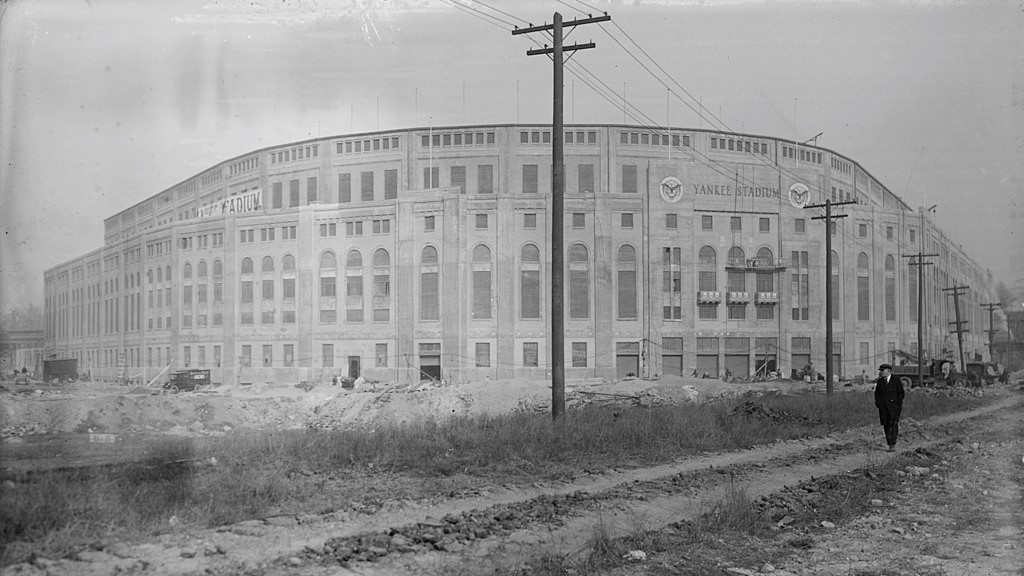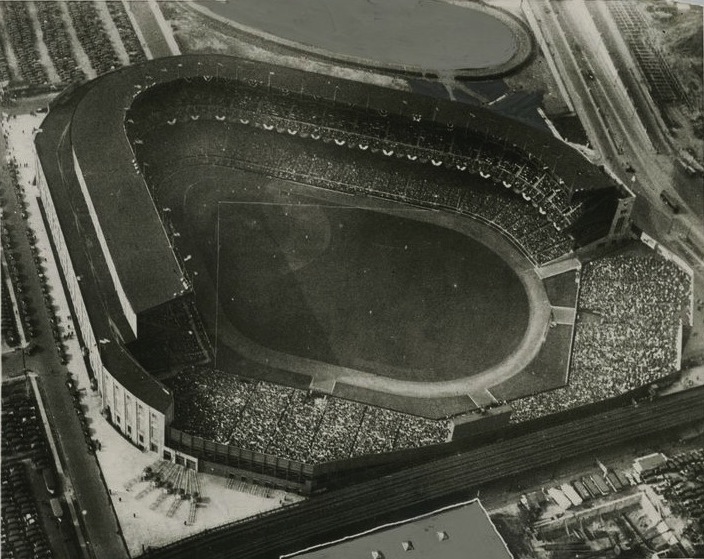Authors:
Historic Era: Era 7: The Emergence of Modern America (1890-1930)
Historic Theme:
Subject:
Spring 2023 | Volume 68, Issue 2


Authors:
Historic Era: Era 7: The Emergence of Modern America (1890-1930)
Historic Theme:
Subject:
Spring 2023 | Volume 68, Issue 2

Editor's Note: Bruce Watson is a writer, historian, and contributing editor of American Heritage. You can read more of his work on his blog, The Attic.
The Bronx, February 14, 1922 — A beefy man steps into a lumber yard frosted with snow. Wielding a hefty bat, he takes off his overcoat and turns to face a reporter. The reporter throws ball after ball, and Babe Ruth slugs them deep, deep over the snowy expanse. The House that Ruth Built, still a blueprint, but not a ballpark, has been christened.
A century of Aprils ago, the New York Yankees opened a ballpark like none before or since. With its towering tiers, copper frieze, and galactic dimensions, Yankee Stadium was “the cathedral of baseball.” Hosting heroes from Babe Ruth to Mickey Mantle, from Pelé to Muhammad Ali, plus boxing matches, papal masses, and more, Yankee Stadium was an American institution.
These days, stadiums are funded by taxpayers, but brewer Jacob Ruppert bankrolled the biggest ballpark in America with $2.5 million ($34 million today) in cash. Play ball!

The son of German immigrants, Ruppert turned down college to wash barrels in his father’s brewery. Rising to eventually run the brewery, he later served in Congress. By 1912, he was looking to buy a baseball team. He turned down the Cubs, couldn’t get the Giants, had to settle for the game’s lowliest team.
Playing in Hilltop Park in upper Manhattan, the New York Highlanders had a long string of losing seasons. Dynasty? Hah!
But Ruppert saw possibilities and bought the team in 1915. Four years later, in a deal we Red Sox fans will NEVER forgive, he bought a franchise named Babe Ruth.
Pennants, home run records, and crowds followed. But the Yankees had to share the Polo Grounds with the hated Giants.
In late 1921, when the Giants raised his rent, Ruppert went looking for land. He considered north Harlem and the West Side before finding a ten-acre lumberyard in the Bronx.
Christened by Ruth’s home runs in the snow, Ruppert’s park broke ground in May 1922. Over the next ten months, 500 workers hoisted two million pounds of steel, poured 45,000 barrels of cement, and outlasted heavy rains and a railroad strike. On April 18, 1923, the park was ready.
Fans began streaming in at noon. Twenty thousand were